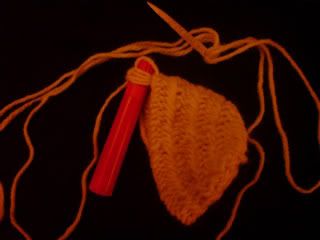Thanks, Tjurved. It looks like I should make my needles larger and more tapered as well.
That cap looks great - neat, regular stitching - and very warm. With cap, mittens and socks like that one would be really warm outside in winter.
I'm really enjoying the nalbinding now - it's quite addictive, isn't it? (and I'm still only on the first row!).
That cap looks great - neat, regular stitching - and very warm. With cap, mittens and socks like that one would be really warm outside in winter.
I'm really enjoying the nalbinding now - it's quite addictive, isn't it? (and I'm still only on the first row!).


